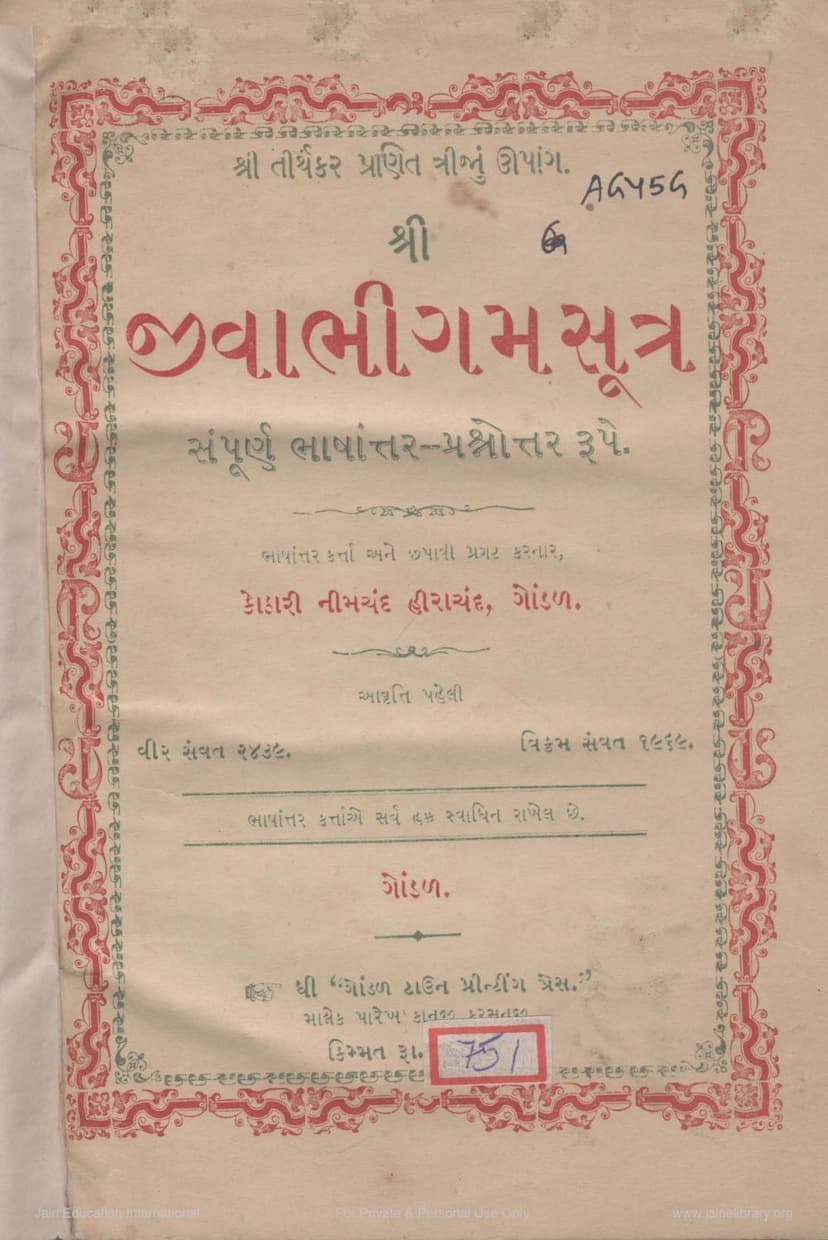Agam 14 Upang 03 Jivabhigam Sutra
Added to library: September 1, 2025

Summary
The Jivabhigam Sutra, the third Upanga (secondary scripture) in the Jain Agamas, is a profound text that delves deeply into the nature of souls and their classifications. Authored by Nimchand Hirach1and Kothari, this voluminous work aims to present a comprehensive understanding of Jiva (soul) in a question-and-answer format, making it accessible to a wider audience.
Key Aspects and Summary:
-
Extensive Classification of Jivas: The primary focus of the Jivabhigam Sutra is the meticulous and exhaustive classification of souls (Jivas). It categorizes souls based on various criteria, including:
- Number of Senses: From one-sensed (Ekendriya) to five-sensed (Pancendriya) beings.
- Mode of Existence: Samyogi (with mind) and Asayogi (without mind).
- Transmigration and Lifespan: Detailing the birth, death, lifespan, and potential duration of existence for each soul category across different realms.
- States of Soul: Covering aspects like birth, body, senses, mind, mind-consciousness, speech, karma, passions, inclinations, and stages of spiritual development.
- Worlds and Realms: Discussing the souls inhabiting different parts of the universe, from hellish beings (Naraka) to celestial beings (Deva) and human beings (Manushya), as well as various types of Jivas in the animal kingdom (Tiryak).
-
Detailed Description of Jivas: The sutra provides incredibly detailed descriptions of the characteristics of each Jiva, including their physical attributes, habitats, lifespans, karmic influences, and spiritual potential. It explores the subtle nuances of existence, such as the difference between perishable and non-perishable souls, or those with and without mind.
-
Theological and Philosophical Depth: Beyond mere classification, the Jivabhigam Sutra also touches upon broader philosophical and theological concepts within Jainism. It addresses questions of karma, liberation, and the interconnectedness of all living beings.
-
Structure and Format: The text is presented in a question-and-answer format, which was a common method for disseminating complex knowledge in ancient Indian traditions. This allows for a systematic exploration of the subject matter, addressing queries and providing clear explanations.
-
Purpose and Audience: The translation into Gujarati and the question-and-answer format indicate an intention to make this advanced philosophical text available to ordinary Jains (Shravaks and Shravikas) who might not have access to or the capacity to study the original Sanskrit or Prakrit texts. The translator, Nimchand Hirachand Kothari, explicitly states this aim in the preface.
-
Inclusion of Related Texts: The sutra also references and incorporates information from other important Jain scriptures, such as the Panhavanji Sutra, suggesting a cohesive body of knowledge within the Jain tradition.
-
Emphasis on Jain Principles: The text reinforces core Jain principles like ahimsa (non-violence) by meticulously detailing the vastness of the soul-world and the sentience of even the most basic life forms. It highlights the importance of understanding these principles for spiritual progress.
In essence, the Jivabhigam Sutra serves as a comprehensive encyclopedia of the soul within the Jain cosmological framework. It is a testament to the analytical rigor and profound spiritual insights of Jain philosophy, aiming to educate and elevate the understanding of life and its myriad forms.